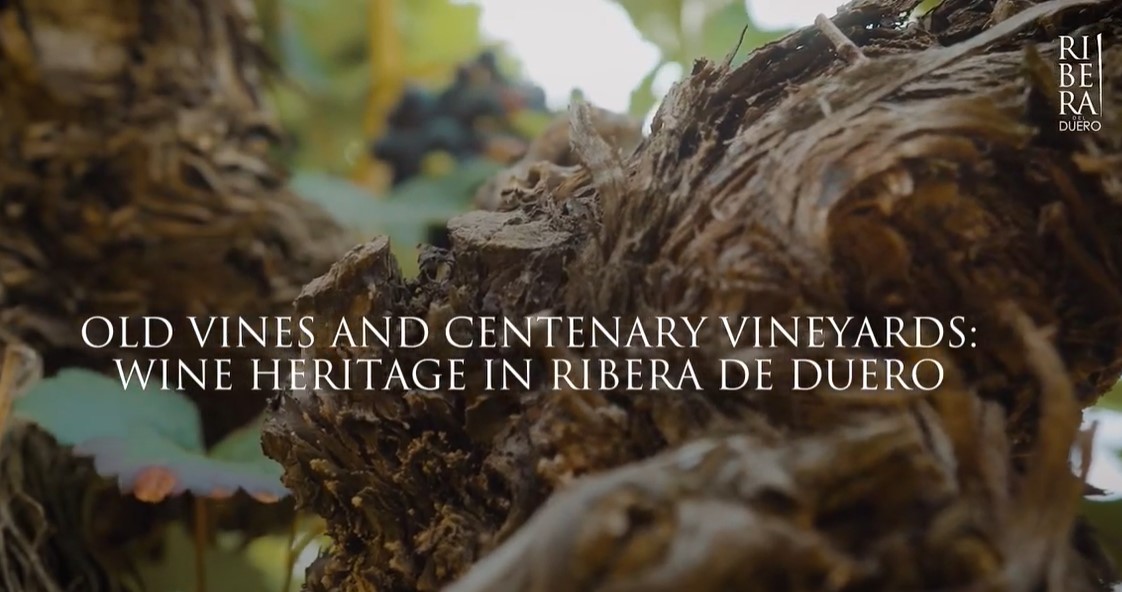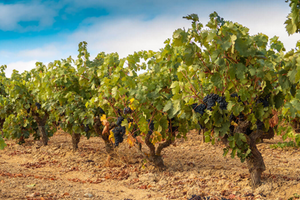Ribera Del Duero and Bush Vines
Posted by EWWines on 3rd Feb 2023
We are celebrating Ribera del Duero at EWWines this February. This region in Northern Spain is known for its extremes of temperature and world-famous bold red wines. We have previously published a blog on Ribera Del Duero which you can read giving more detail on the climate, geography, viticulture and history of the region located about two hours north of Madrid in Northern Spain.
We have created a 6 bottle mixed case of Ribera Del Duero wines to help you celebrate Ribera Del Duero this February so we recommend that you purchase that firstly, online HERE, or in-store before you read the rest of this blog, preferably cosied up by a roaring fire on a dark and chilly winters evening or with a loved one for Valentine's Day, perfect!
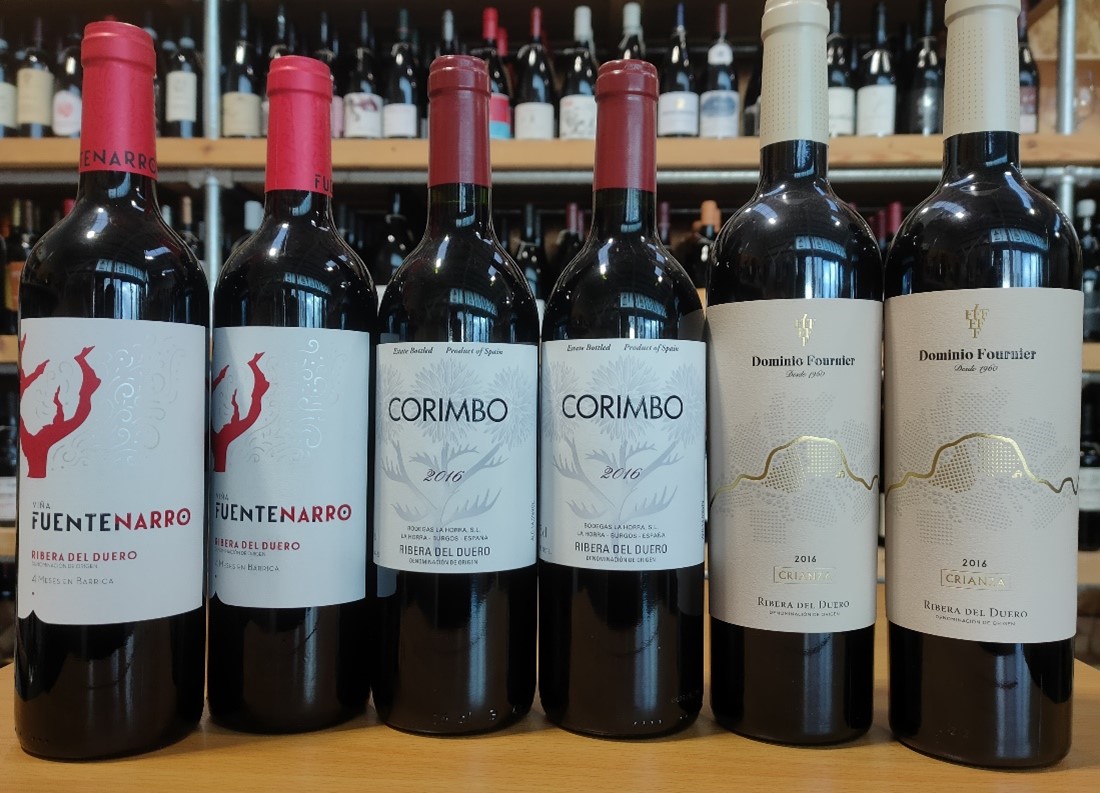
Without further ado, glass of your selected wine in hand let us consider vines in a little more detail, why train vines? Then we will focus on bush vines specifically.
First, why train a vine? Vines are natural climbing forest plants that if left unchecked will naturally sprawl until it finds something suitable to climb then grow several vertical metres each year with laterals and hold on with tendrils searching for direct sunlight above the forest canopy to maximise photosynthesis on its leaves and therefore its chance of survival. As a result, if left unmanaged then vines a vineyard would be impossibly unviable to manage. A sensible approach therefore is to train to manage the vigorous nature of a vine. Vines also have a tendency to continue to grow shoots without human intervention and not concentrate their energy on the perfect fruit production desired to make wine. Much skilled work, care and dedication is needed during the growing season to manage vines successfully, with a focus on plant health, quality and the quantity of fruit produced (known as yield).
A bush or gobelet vine (so named after your wine drinking vessel!) is a head trained system which is spur pruned each winter to encourage but limit vertical shoot growth for the following vintage. As the below image shows following winter pruning in Bodegas La Horra’s Corimbo vineyard the spurs can be seen. Each bush vine creates its own pruning puzzle and is skilled work indeed which therefore takes more time and has significant labour costs when compared to other training systems commonly used in vineyards.
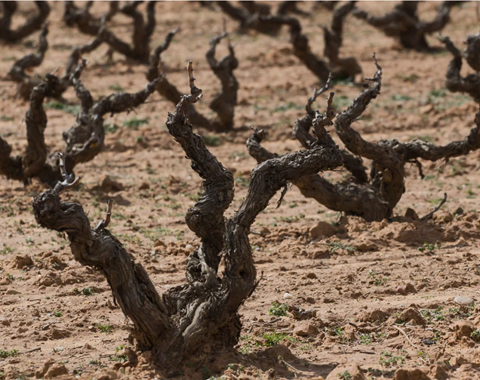
Bush vines are most commonly employed in warm climates such as Ribera Del Duero with less water availability so therefore there is less or no risk of fungal diseases because mechanisation and conventional spray methods can’t be utilised which encourages the use of more sustainable vineyard management techniques with less spraying, less carbon emissions and less man made inputs to the landscape.
Vine vigour is managed carefully as we discussed to combat the vigorous nature of most vines. Being close to the floor has the added benefit of providing extra ripeness of the fruit and the tannins of the wine because of the emitted heat from the sandy soils of the region which act like radiators, gently warming the fruit on the vines aiding sugar accumulation during the vines grape ripening stage in the late summer.
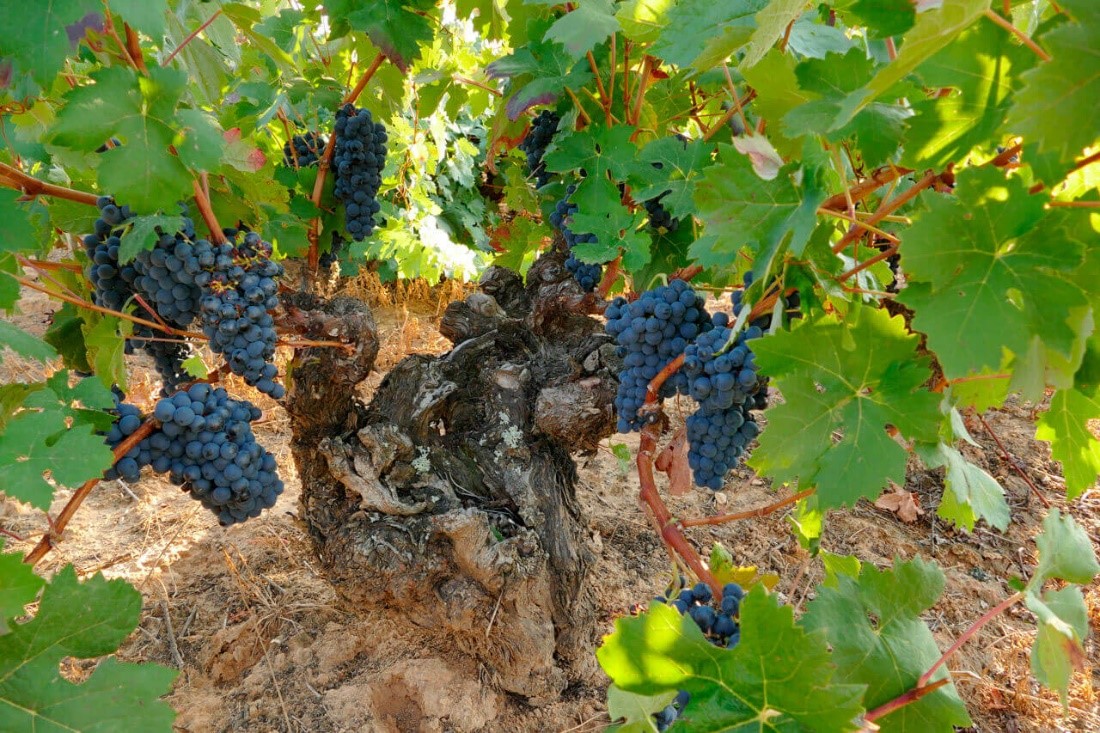
Due to the bush vine method and scarcity of water in Ribera del Duero vines produce limited yields. Less is more as they say. The 10-year average yield in Ribera Del Duero is approximately half the permitted yield set by the DO. Ribera Del Duero publish the following figures "4,380 kilos of grapes per hectare, far below the 7,000 kilos of grapes per hectare permitted” (Ribera Del Duero 2023). This low yield means that quality is extremely high and the concentration of flavour, grape ripeness and fruit health of the grapes is optimal to produce outstanding quality wines with great intensity of flavour, concentration and increase the potential for bottle development which will give tertiary flavours of dried black fruits, leather, earth and almost meaty character of the finest examples.
Bush vines are often described as old; this is no marketing gimmick in Ribera del Duero! It is common to discover in Ribera Del Duero 80 year plus vines which give incredibly weathered gnarly old trunks and have a particular charm. Being established for such time allows a fantastic natural disease resistance to be build up by the vines reducing the need for human inputs, giving better wine with lower carbon emissions. The age also means that the yields are naturally lowered again which as discussed aids fruit quality and the vigour is reduced. The vine root system also tend to be deep which allows access to deep water reserves in bedrock layers which benefit the vines throughout their growing season.
When it comes to harvest time, it is not possible to mechanise with Bush Vines. The negatives of this are that the manual harvest is slower and costs significantly more due to the time and more skilled labour required. In warm regions mechanisation allows for night time harvest taking advantage of the cooler night time temperatures which can preserve the grape quality on arrival at the winery. To combat this, small trays are used for collecting the fruit as in the picture below therefore not crushing the fruit or damage skin during harvest in the sunshine before arriving at the winery.
The benefits of bush vines and hand harvest are that grapes can be sorted during harvest in the field, maximising quality. Picking whole bunches of fruit minimised spoilage of oxidation in in the sunshine. The option for fermenting the whole bunches including the stalks is then possible which can add tannins and complexity to wines. Whole bunch fermentation can also (in the right hands) allow for more perfumed floral and aromatic characters to shine in the wines which lifts the dark broody fruits on the palate.
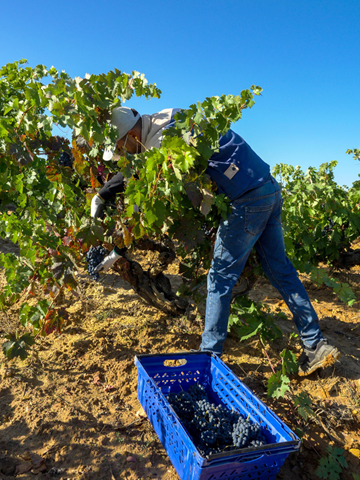
Want to try something special, after hopefully enjoying the Corimbo in your selection box? Corimbo 1 from Bodegas La Horra comes from over 50-year-old vines and is something special indeed.
Want to learn more? Come and ask us in-store and taste some of our range to dive into this traditional region and its incredible wines or visit Ribera Del Duero’s website for the UK there is an abundance of information including this short video, enjoy!
Jorge Monzón - Old wines and centenary vineyards: Wine heritage in Ribera del Duero
